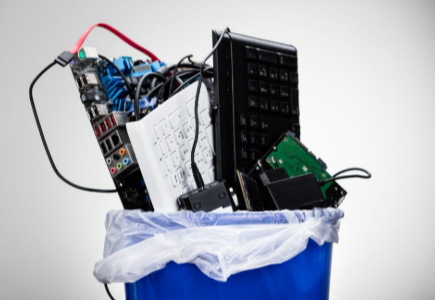The Rise of Sustainable Consumer Electronics

The emergence of sustainable consumer electronics reflects a significant shift in market dynamics. As consumers increasingly prioritize eco-friendly products, manufacturers are responding with innovative materials and eco-design principles. This transformation not only enhances energy efficiency but also fosters a culture of accountability in recycling and sustainability. However, the implications of this trend extend far beyond product selection, raising questions about the future of the electronics industry and its role in a sustainable economy.
Innovative Materials and Eco-Design
As consumer demand for sustainability grows, manufacturers increasingly turn to innovative materials and eco-design principles to reshape the electronics landscape.
Biodegradable plastics are gaining traction, offering a viable alternative to traditional materials. Sustainable sourcing practices ensure that raw materials are ethically obtained, minimizing environmental impact.
This shift not only addresses ecological concerns but also empowers consumers, fostering a sense of responsibility and freedom in their choices.
Read more: Carbon Footprint of the Cloud: Is It Eco-Friendly?
Energy Efficiency and Performance
The focus on innovative materials and eco-design in consumer electronics naturally extends to energy efficiency and performance, which are critical factors in sustainable practices.
Smart technology plays a pivotal role in optimizing energy consumption, influencing consumer behavior towards more eco-conscious choices. As efficiency improves, consumers increasingly prioritize devices that not only perform well but also align with their values of sustainability and environmental responsibility.
Responsible Recycling and Circular Economy
A significant shift towards responsible recycling and a circular economy is essential for addressing the growing electronic waste crisis.
Effective e-waste management practices can enhance product longevity, minimizing resource extraction and environmental impact.
By promoting repair, refurbishment, and recycling, consumers can play a vital role in creating sustainable electronics.
This approach not only conserves resources but also empowers individuals to make environmentally conscious choices.
Conclusion
As the tide of consumer preference shifts towards sustainability, the electronics industry is evolving like a butterfly emerging from its chrysalis. With innovative materials and eco-design at the forefront, manufacturers are not just creating products but cultivating a culture of responsibility. According to a recent survey, 70% of consumers now prioritize eco-friendly features when making purchases. This transformation fosters a circular economy, ensuring that technology can thrive without compromising the planet, much like a garden flourishing through mindful stewardship.





